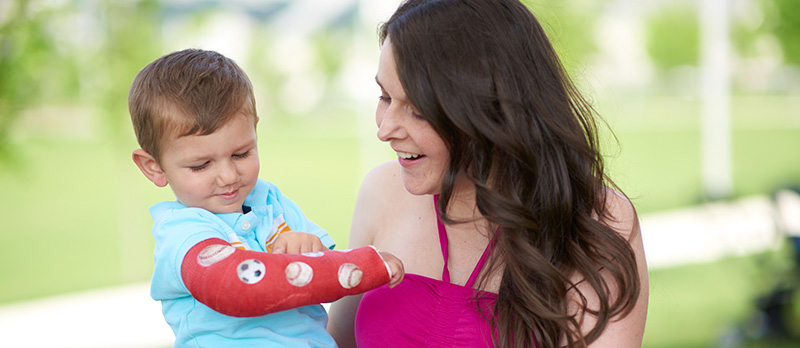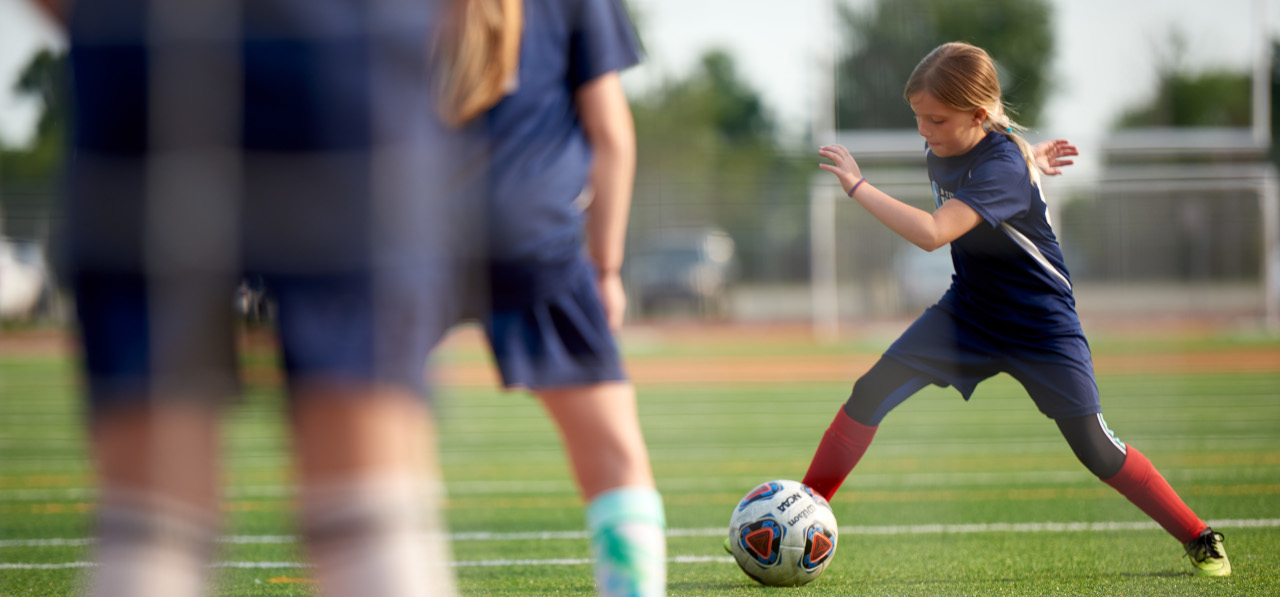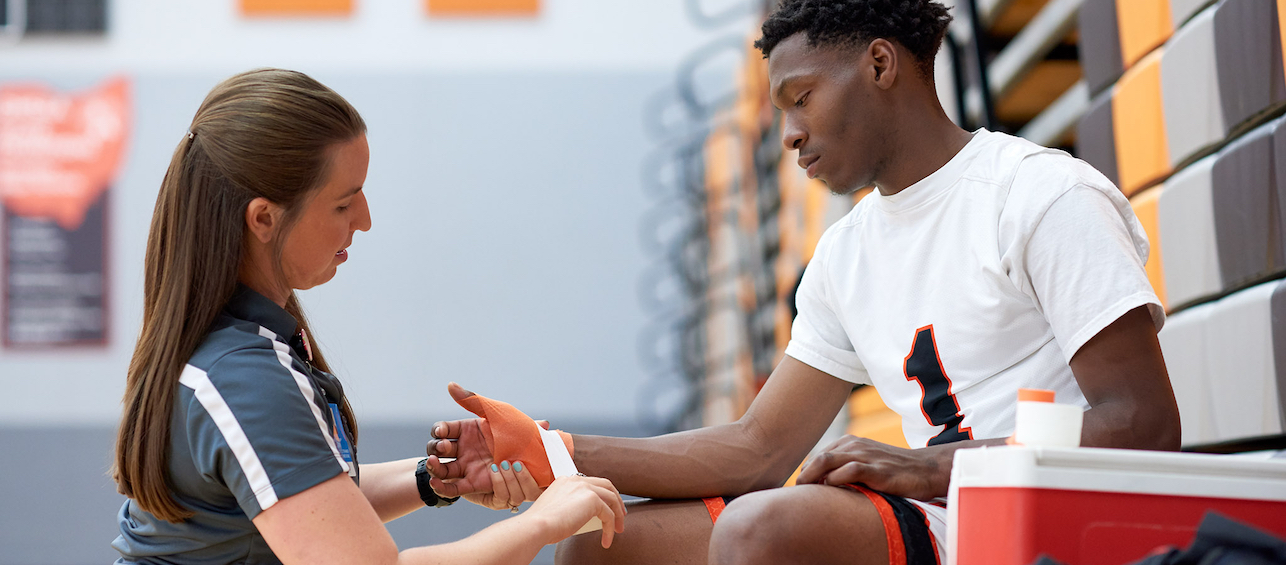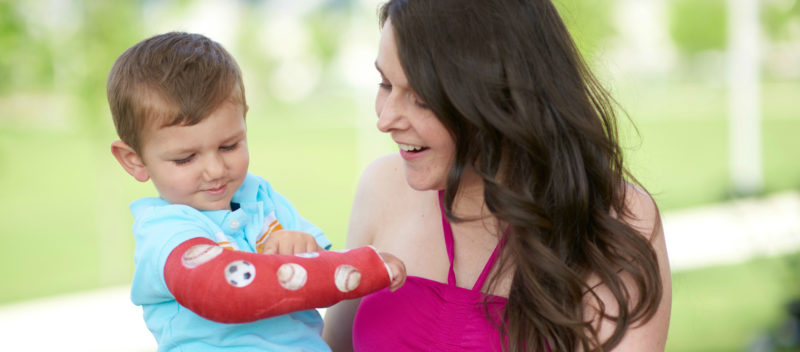When your child breaks or fractures a bone, you want him to feel better and heal as soon as possible. The good news is that kids’ bones are great at healing and remodeling. In fact, they’re better at it than adults. This means that kids may actually have more recovery options than adults; surgery isn’t always needed.
As a children’s hospital, we often say that children aren’t just little adults. There are far more considerations than their size. This is true for many aspects of pediatric orthopaedics, and is especially the case when a child breaks or fractures a bone. Treatment should be tailored to each kid, as every child, break, and situation is different. We recommend families consider the following aspects when we discuss next steps together:
5 Things to Consider When Your Child Breaks or Fractures a Bone
1. Age
A child’s age is important to consider when he breaks or fractures a bone. This is because younger children still have open growth plates at the end of their bones and thus, have a better capacity to heal. So for instance, if a 7-year-old child and an adult have the same exact fracture, we would not treat them the same way. Because a 7-year-old still has open growth plates, we can line up the bones and cast or splint the break and this child will heal much more quickly than an adult (even if the adult has surgery). There is no universal time when kids’ growth plates close, but typically they close about two years after their pubertal growth spurt.
2. Maturity
The maturity of bones can vary widely from child to child – sometimes kids’ bones are skeletally advanced or immature for their age. When we’re thinking about the best options for healing, we will consider whether a child is close to puberty. This is around the time when the open growth plates close, and thus, less growth and healing take place.
For instance, when a young child breaks her arm, we will line it up with a splint or cast. Even if it is not perfectly aligned, the open growth plates will help to straighten it out over time. However, with an older child, those growth plates may be close to closing and we will have to be stricter about how well the bones line up. Therefore, in an older grade schooler, we may need to use flexible nails to keep the arm aligned. For a teenager, we may him treat like an adult and use flexible nails or plates and screws.
3. Fracture pattern
Different types of breaks or fractures require different types of treatment. For instance, on a child, a femoral (thighbone) fracture almost always requires surgery. A distal radius fracture (broken wrist) rarely needs surgery.
4. Equipment
Another factor we consider when a child breaks a bone is the surgical equipment that we have available to us. The reality is that the vast majority of surgical equipment is designed for adults, which means that some surgical implants may not fit a child’s bones. This is not usually an issue because in many cases, surgery is not needed. In certain situations where surgery is indicated, we can use implants specially designed for small bones and that avoid injury to the growth plates.
5. Risks of surgery
Surgery is not without risks, and we need to consider if the benefits outweigh them. Because kids have an amazing capacity to heal broken bones, it’s often not the recommended first line of treatment. In fact, only about 10% of the kids who visit us with broken or fractured bones need surgery. The risks of this type of surgery are similar to any other surgical procedure, which is infection, general risks of anesthesia, damaging nearby nerves and blood vessels, as well as implant-related problems.
If your child has broken or fractured a bone, I recommend having a discussion with his doctor about the above considerations. It could help you determine together, as a team, the best, personalized approach for healing.
Our division of orthopaedics provides surgical and non-surgical approaches for children of all ages with medical conditions or injuries affecting the bones, joints and muscles. To learn more, call 513-636-4785 or fill out an online form for more information.






Awesome tips. Great doctor in Orthopaedics. Thanks for sharing